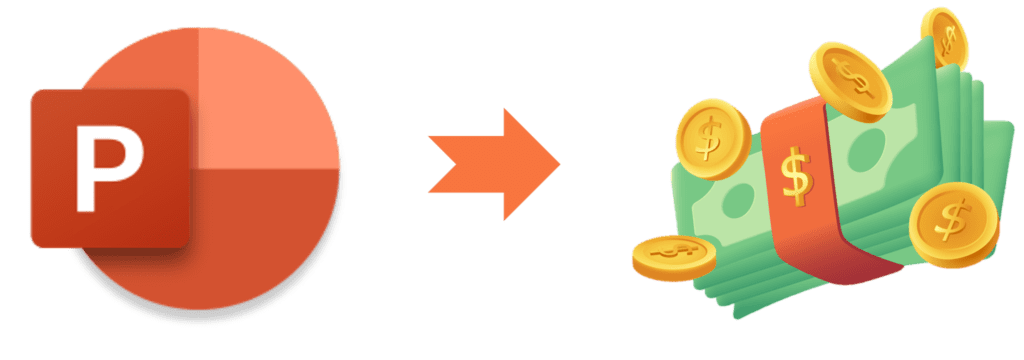
Becoming a graphic designer and making money using Microsoft PowerPoint is a creative and viable career choice. While PowerPoint is primarily known as a presentation software, it offers numerous features that can be utilized for graphic design purposes. Here are detailed steps to help you get started:
Step 1: Acquire the necessary skills and knowledge
To become a graphic designer, you’ll need to learn fundamental design principles and develop proficiency in graphic design software. Start by exploring online tutorials, courses, and resources that teach graphic design principles, color theory, typography, layout design, and composition. Familiarize yourself with design concepts such as hierarchy, balance, contrast, and alignment.
Step 2: Learn PowerPoint features and capabilities
Next, dive into learning the features and capabilities of Microsoft PowerPoint. Familiarize yourself with the various tools, options, and design elements available within the software. Study how to create and format shapes, use gradients and fills, work with text and typography, apply animations and transitions, and manipulate images. Experiment with the different design templates and themes that PowerPoint offers.
Step 3: Build a portfolio
Create a portfolio of your graphic design work using PowerPoint. Showcase your skills by designing various types of visuals, such as logos, business cards, brochures, social media graphics, infographics, and presentations. Aim to demonstrate your creativity, attention to detail, and ability to deliver visually appealing designs. Include a range of styles and techniques to showcase your versatility.
Step 4: Identify your target market
Define your target market or niche. Consider who might benefit from PowerPoint graphic design services. This could include small businesses, entrepreneurs, educators, trainers, or anyone who requires professional-looking presentations or marketing materials. Identifying your target market will help you tailor your services and marketing efforts more effectively.
Step 5: Establish your pricing and services
Determine your pricing structure based on factors such as the complexity of the design projects, your level of experience, and the market rates in your area. Consider offering different packages or options to cater to different client needs. For example, you could provide basic presentation template designs, custom graphics, or complete branding packages.
Step 6: Promote your services
Market your services through various channels. Create a professional website to showcase your portfolio and provide information about your services. Utilize social media platforms such as Instagram, LinkedIn, and Behance to share your designs, engage with potential clients, and build your online presence. Network with professionals in related fields, attend industry events, and consider joining relevant design communities to expand your reach.
Step 7: Collaborate and seek feedback
Collaborate with clients to understand their design requirements and deliver work that meets their needs. Actively seek feedback and make necessary revisions to ensure client satisfaction. Positive testimonials and referrals from satisfied clients can significantly help grow your client base and reputation.
Step 8: Continuously improve your skills
Graphic design is a constantly evolving field, so it’s essential to stay up-to-date with the latest design trends, techniques, and software updates. Participate in workshops, attend design conferences, enroll in online courses, and join design communities to expand your knowledge and skills.
Remember that becoming a successful graphic designer using PowerPoint requires dedication, continuous learning, and a strong sense of creativity. By following these steps and consistently honing your skills, you can develop a lucrative career in graphic design using Microsoft PowerPoint.
Below are few services you can offer as a Graphic Designer
- “Graphic design services”
- “Logo design”
- “Website design”
- “Brochure design”
- “Branding agency”
- “Print design” – Print design encompasses various types of graphic design services like business cards, flyers, posters, and more.
- “Packaging design”
- “UI/UX design” – User interface (UI) and user experience (UX) design are in-demand skills.
Below are few trusted websites to enroll as freelancer Graphic designer
If you’re specifically looking for trusted websites to enroll as a freelance graphic designer, here are some platforms that cater specifically to graphic design services:
- Behance (www.behance.net): Behance is an online platform owned by Adobe that allows designers to showcase their portfolio of work. While it doesn’t directly connect freelancers with clients, it is an excellent platform to showcase your skills and attract potential clients.
- Dribbble (www.dribbble.com): Dribbble is a popular online community for designers to showcase their work, connect with other designers, and find freelance opportunities. It offers a job board where clients post design projects and freelancers can apply.
- 99designs (www.99designs.com): As mentioned earlier, 99designs is a platform specifically focused on graphic design. It operates as a contest-based marketplace where clients post design briefs, and freelancers submit their designs to compete for the project.
- DesignCrowd (www.designcrowd.com): DesignCrowd is another design contest marketplace where clients can post design projects, and freelancers can submit their designs. It covers various categories, including logos, business cards, web design, and more.
- Creative Market (www.creativemarket.com): Creative Market is a platform where designers can sell their digital design assets, such as fonts, templates, illustrations, and graphics. While it’s not a direct freelancing platform, it provides an opportunity for graphic designers to monetize their work.
- Working Not Working (www.workingnotworking.com): Working Not Working is an exclusive community for creative professionals, including graphic designers, art directors, and illustrators. It connects freelancers with top-tier clients and offers opportunities for remote and on-site work.
Remember to thoroughly research and review each platform to understand their terms, pricing, and reputation before enrolling as a freelancer. Additionally, creating your own professional website or portfolio can greatly enhance your visibility and attract clients outside of these platforms.


